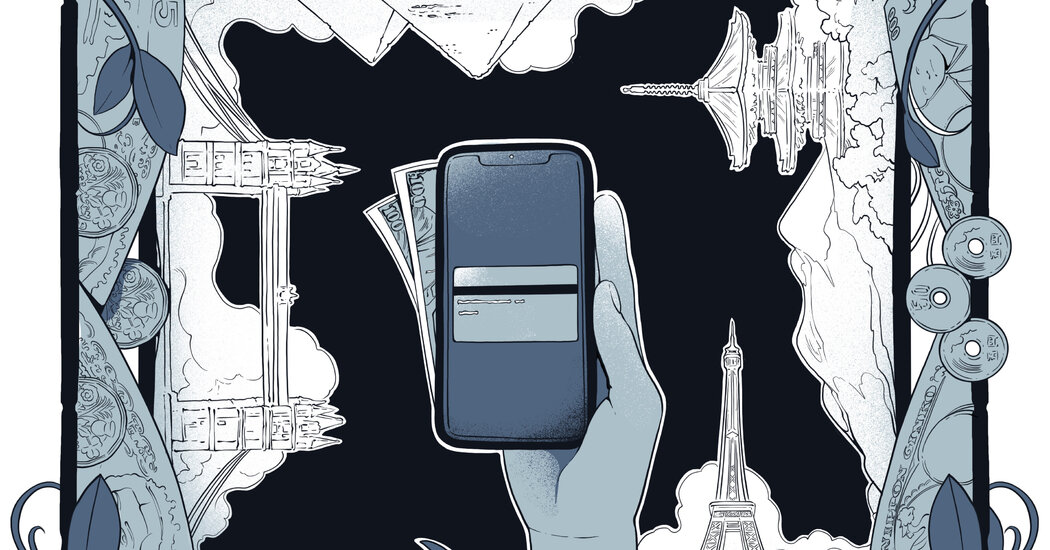Using foreign money wisely requires understanding the going exchange rate with the U. S. dollar and practicing the following strategies to avoid excessive fees.
Take a card that doesn’t charge transaction fees
The primary rule of managing purchases abroad is ensuring you are not using a credit card that charges foreign transaction fees.
“Everything you buy will be 3 percent more expensive if you have a card that doesn’t waive foreign exchange fees,” said Nick Ewen, the director of content at the Points Guy, a travel website that focuses on maximizing credit card benefits.
You don’t need an expensive card with a $500-or-more annual fee to have foreign transaction charges waived. Capital One offers cards with no annual fees or foreign transaction charges. The personal finance website NerdWallet maintains a list of credit cards that don’t charge a fee for foreign transactions.
Credit cards are often safer than cash because fraudulent charges can be disputed. (But given high interest rates, use credit cards only if you regularly pay off the balance in full.)
If you are planning on paying primarily with credit, bring a second card as a backup in case the first is lost, stolen or declined.
Ask to be charged in the local currency
If you are offered the choice to be charged in U.S. dollars or the local currency, always go with the local option.
“People feel like they’re playing with Monopoly money so they will say yes to the U.S. price because they know what it is, but you should let the credit card company do the conversion,” said Sally French, a travel expert with NerdWallet.
Merchants offering to charge in the local currency or U.S. dollars are engaging in “dynamic currency conversion” or setting their own exchange rate, which is typically worse than the going bank rate. Mr. Ewen of the Points Guy has seen a markup of 3 to 10 percent for paying in dollars.
“The reason you get a favorable exchange rate with a credit card is the issuer is operating at much more scale and they’re able to do a large volume of transactions,” said Greg McBride, the chief financial analyst at Bankrate, a personal finance site.
Don’t exchange money at the airport
Though you may need cash upon arrival in a foreign country to pay for a cab or tip a bellhop, don’t get it at an airport.
“In general, the worst place to exchange currency is, in fact, the airport,” Ms. French said.
She advises ordering a small amount of foreign currency from your bank before you fly. This method may not deliver the best exchange rate, but it usually beats the airport currency desk, Ms. French said.
Other experts recommend holding out for foreign cash until you arrive and can use a local A.T.M., where you will most likely get a better exchange rate.
As with credit cards, if you’re given the option, always choose to have a withdrawal debited in local currencies. Some A.T.M.s will engage in dynamic currency conversion and dispense local currency but debit your account in a U.S. dollar amount; don’t fall for it.
Also, larger hotels will often convert small amounts of money for their guests.
Beware of A.T.M. fees
Expect to pay $2 to $6 to use a machine that is out of your bank’s network, plus an additional foreign transaction fee, usually 1 to 3 percent, according to NerdWallet. To avoid excessive fees, limit the number of times you use an A.T.M. by withdrawing larger amounts.
Check with your bank to determine whether it has a reciprocal relationship with a foreign bank that allows you to use its A.T.M.s without incurring out-of-network charges. For example, Bank of America has partnerships with a number of banks in Canada, Europe and the Caribbean, though it generally charges 3 percent of the amount withdrawn as a foreign exchange fee.
Citibank will waive out-of-network A.T.M. fees up to a certain number of monthly transactions, depending on the type of account. Charles Schwab Bank offers a checking account with unlimited A.T.M. fee rebates worldwide. Capital One offers a checking account with fee-free access to more than 70,000 A.T.M.s globally.
Use mobile payment for transit
Depending on where you’re going, check whether local transit systems accept mobile payments such as Apple Pay or Google Pay, which allow users to store a credit card in a cellphone app for contactless transactions. Transport for London, for example, allows mobile payments and will cap any charges once you’ve reached the price for a day pass.
The systems in Stockholm and Toronto also allow mobile transactions.
Don’t return home with coins
In countries like Canada and Australia, local currency commonly comes in high-denomination coins valued at $1 or more. When paying with cash, it’s easy to find your pockets weighted down with coins. Try to spend or donate them abroad, as it is harder to exchange coins for U.S. dollars once you are back stateside. Bank of America, for example, does not accept coins for conversion.







